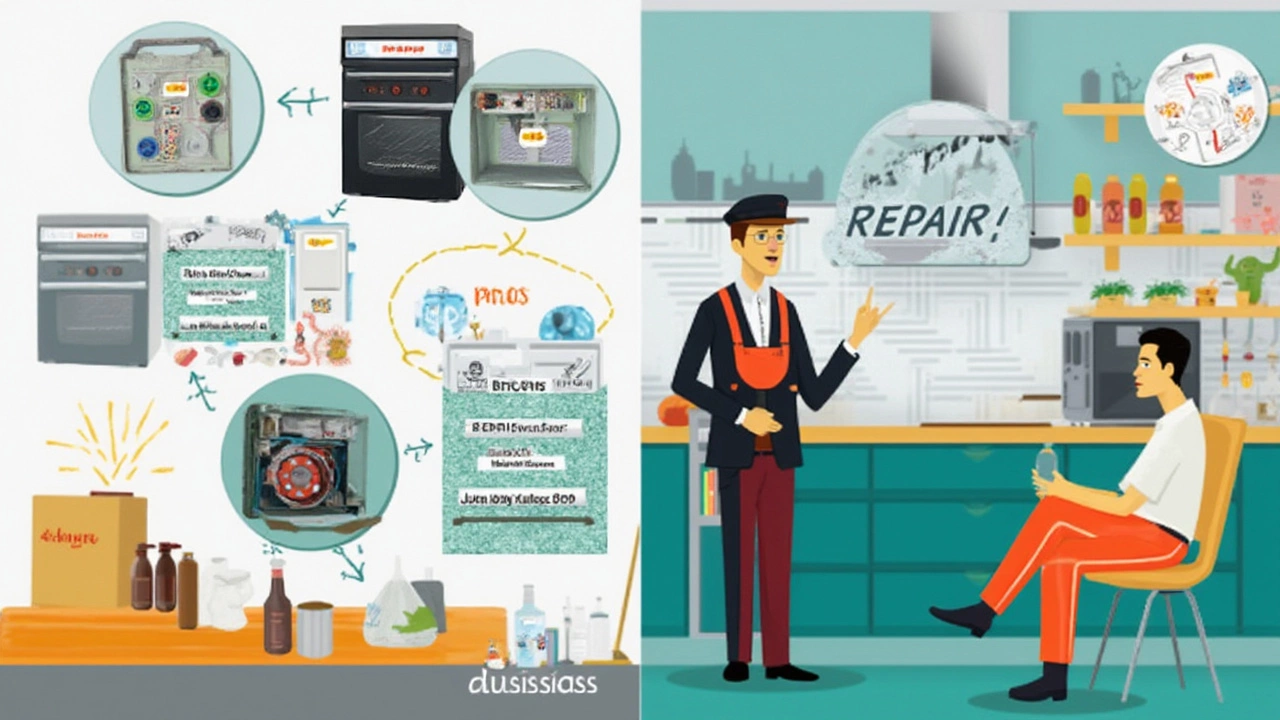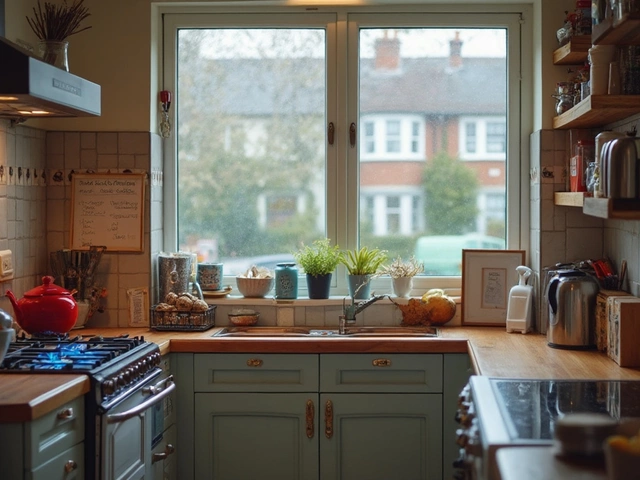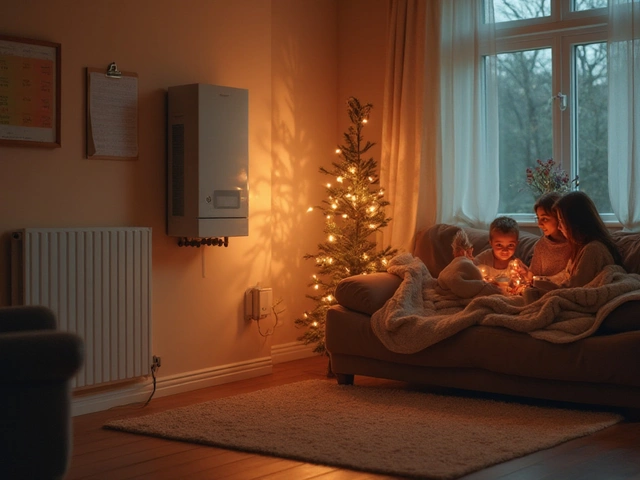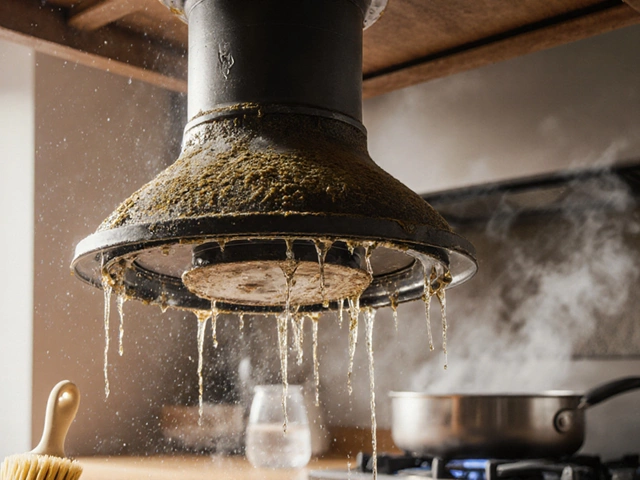You hit ‘Bake,’ and instead of the lovely hum of preheating, your oven stares back at you—dead, blinking, or stuck in limbo. Annoying, right? Before you panic or whip out your wallet, it's worth getting the lowdown on your oven control board since it's basically the oven’s brain. When it goes bad, a lot of stuff stops working, but swapping it isn’t always the miracle fix people hope for.
The control board tells the oven what to do when you push buttons. It manages temps, timers, and a bunch of little tricks behind the scenes. If it’s shot, sometimes your oven won’t heat, won’t turn off, or flashes weird error codes. But here’s the kicker—not every oven problem comes from the board, and replacing it can cost a chunk.
So if you’re stuck between shelling out for a pricey repair or just tossing the oven and starting fresh, you want to be sure. Knowing what’s actually wrong saves you both money and frustration. Let’s break down what’s really going on and whether swapping that control board is going to fix things—or just drain your bank account.
- What Does the Oven Control Board Actually Do?
- How to Tell If Your Control Board's the Problem
- Replacement Cost vs. Buying a New Oven
- DIY or Call in the Pros?
- Tips for Getting the Most out of Your Oven Repair
What Does the Oven Control Board Actually Do?
The oven control board sounds fancy, but it’s basically the main circuit board in your electric oven. Think of it as your oven’s command center. When you select a cooking mode or punch in a temperature, the board takes those signals and sends out the right instructions so everything works in sync. Without the board, your oven’s just a big metal box with some wires.
Some common things the control board manages include:
- Turning the heating elements on and off
- Regulating the inside temperature to match your setting
- Running timers and digital clocks
- Handling safety locks for the oven door
- Serving up error codes when something’s wrong
Most modern ovens have at least one control board. High-end models might have several, each doing a different job—one for the main oven, another for convection, sometimes even one just for the display panel. The most important part is the boards are loaded with relays and electronic components. If something shorts or a chip fails, you might get random beeping, the oven could stay cold no matter what, or the buttons might stop working.
Here’s a quick look at the real-world impact from recent appliance data:
| Feature Managed by Control Board | Percent of Reported Oven Failures (2023) |
|---|---|
| Heating Issues | 45% |
| Display Malfunction | 20% |
| Error Codes | 15% |
| Door Lock Problems | 12% |
| Other (Lights, timers, etc.) | 8% |
The oven control board basically pulls all the strings. If just one part of it fries, the entire oven can act up in weird ways. Spotty heating or a totally dead panel? Nine times out of ten, the board has something to do with it.
How to Tell If Your Control Board's the Problem
Not every oven fail is the control board's fault, so before you order a new part, let’s get specific. You don’t want to drop cash on a fix that doesn’t actually solve anything. Here’s how you can isolate whether your oven control board is toast—or if another part is to blame.
Start with the basics: is your oven completely unresponsive, no lights or sounds? If so, check the power at the outlet and your circuit breaker. No power means the control board never even gets a chance to work, so rule out the easy stuff first.
If the oven powers on but acts weird—like flashing random codes, buttons that don't work, or timers and temperatures not responding—those are classic red flags for control board issues. Some common error codes (like F1, F3, or F7 on popular brands) point directly to the control board or sensor circuits controlled by the board.
- Weird, unpredictable behavior: the oven might heat up, then suddenly cut off, or refuse to stop heating even when powered off.
- Display is dead or glitches: numbers flicker, or the screen is blank but you still hear relays clicking inside.
- No response to buttons: nothing happens, or the response is delayed or unrelated to what you pressed.
If you’ve run through a basic oven reset (unplug for a minute or two, then plug back in) and the trouble sticks, the board could be your culprit. But before you commit, check connectors and wiring harnesses for signs of burning or corrosion—sometimes a loose connector mimics a bad board.
For folks comfortable with tools, a multimeter can help. Measure voltage at the board (with the unit unplugged first, of course). If power is present but nothing functions as it should, odds are high the board is fried.
Bottom line: rule out simple stuff like blown fuses, broken elements, and loose wires before throwing money at the control board. Take a picture of any error code and search your oven’s model number online, as manufacturer diagnostics often point out if the board is likely the cause. Careful troubleshooting means you won’t waste cash swapping the wrong part.

Replacement Cost vs. Buying a New Oven
Staring at a busted oven, you might wonder if fixing it or just going shopping for a new one is smarter. The price tag for a new oven control board isn't exactly pocket change. Usually, a basic control board runs between $120 and $350 just for the part. Toss in labor—most techs charge $100 to $200 an hour—and your bill could land anywhere between $250 and $600. Got a high-end brand or a double oven? You’re probably looking at the top end or even higher.
Now, stack that up against a new oven. A low-end electric range can go for $400 to $700, but popular mid-range models hover around $800 to $1,200. If you like smart features or a fancy look, you’ll be shelling out a lot more. Here’s how the costs stack up side by side:
| Option | Low Estimate (USD) | High Estimate (USD) |
|---|---|---|
| Replace Control Board | $250 | $600+ |
| New Basic Electric Oven | $400 | $700 |
| New Mid-Range Oven | $800 | $1,200+ |
If your oven is less than five years old and you like how it works, replacing the control board could be worth it. Repairing older ovens (over 10 years) is usually a losing game, especially when other parts might go out soon, too. The average oven lasts about 13-15 years if you treat it kindly, but after a decade, parts and tech support start drying up.
"Always compare repair costs with at least 50% of the price of a new appliance. If your fix is close to or over half the price of a new oven, replacement is usually the way to go." — Consumer Reports, 2024 appliance repair guide
A warranty can change the equation. If your oven is still covered, don’t pay for anything—call the manufacturer. But if it’s out of warranty and you’re facing a $500 repair bill, it’s hard to ignore the numbers. Here are some quick tips to help you choose:
- If the oven control board is the only problem and everything else looks good, repair might save you cash.
- If the oven’s old or other things are acting up (like uneven heating or the door not closing right), replacement is safer.
- Upgrading gives you better energy efficiency, cool features, and an actual warranty.
No one likes wasting money, so check your numbers. Sometimes putting cash into old machines is just paying for more trouble down the road.
DIY or Call in the Pros?
If your oven's gone rogue, swapping out the control board might sound simple—you just buy the part, pop it in, and get on with dinner, right? Not quite. The actual job isn’t rocket science, but it packs a few curveballs that can trip up anyone who isn’t comfortable messing around with electronics or kitchen appliances.
First off, always unplug the oven before you even think about opening anything up. Electrocution is no joke, and those control boards can hold a charge. Most boards are tucked behind the oven’s main panel, which usually means removing a handful of screws and sometimes dealing with sharp sheet metal. Once you’re in, you’ll see a mess of wire connectors and probably more dust than you expected. Snap some photos before you unhook anything—it’s easy to forget where wires go when you're reassembling everything.
- Oven control board replacements can run anywhere from $120 to $350 just for the part, depending on brand and model.
- If you call a pro, labor can add $100 to $200 more, but you usually get a warranty on their work.
Here’s a table that breaks down the usual costs:
| Option | Part Cost | Labor | Approx. Total | Warranty |
|---|---|---|---|---|
| DIY | $120-$350 | $0 | $120-$350 | No (unless manufacturer warranty on part) |
| Professional Repair | $120-$350 | $100-$200 | $220-$550 | Usually 3-12 months on parts/labor |
One solid reason to hire the pros: misdiagnosis. Plenty of ovens get new boards only to keep acting up because the real problem was a wire, sensor, or even a blown fuse. A certified tech will check everything with the right meters before swapping expensive parts.
Another plus for calling in help? Pros know which model boards are notorious for quick failures or have manufacturer recalls. They can sometimes source better boards or even refurbished units if new ones are hard to get—pretty common with older ovens.
If you grew up swapping out your own car alternators or are handy with a multimeter, you’ve got a fighting chance of pulling this off yourself. If power tools aren't your thing and you don't want to risk more downtime or headaches, there’s no shame in letting someone else handle your appliance’s guts. Sometimes, spending a couple hundred now saves you unlimited hassle later.

Tips for Getting the Most out of Your Oven Repair
If you’re ready to get down to business with oven repairs, you want to make every buck and minute count. Here’s how to squeeze the most out of your efforts, whether you're doing it yourself or paying a pro.
- Oven control board replacements usually cost between $150–$450 including labor. For some high-end models, that can go north of $600.
- Check your appliance’s model and serial numbers before ordering parts. Lots of folks order the wrong board. Don’t be that person stuck with a $300 paperweight.
- If your oven is under ten years old, repairing it often makes sense. Ovens made after 2015 are typically more energy efficient, so a fix can extend your savings on power bills.
- Don’t ignore recalls. Some big brands like Whirlpool and GE have had oven control board recalls. One quick search can clue you in—don’t pay to fix what you might get replaced for free.
- Use surge protectors or plug your oven into a grounded outlet. Most control boards die from power surges. Protecting it costs less than one repair call.
- Always double-check connections. Over 30% of "bad control board" cases come down to loose wires, a popped fuse, or a faulty breaker. Quick fix, big relief.
- Ask your tech if they carry refurbished or generic parts. New OEM boards are pricey, but certified refurbs work just as well for less cash and even come with warranties sometimes.
Here’s a quick table showing average repair and replacement costs for common oven problems, compared to slapping in a new oven:
| Repair Type | Average Cost (USD) |
|---|---|
| Oven control board replacement | $250-$400 |
| Heating element replacement | $120-$250 |
| Thermostat replacement | $100-$200 |
| Brand new electric oven (mid-range) | $700-$1,200 |
Keep documentation, including your receipts and any instructions. If things don’t go right, you’ll need paperwork for warranties or returns. And last tip—set a reminder to check for firmware updates on smart ovens. Plenty of modern ovens can get glitchy if not up to date, which sometimes looks like a control board fail but isn’t.





